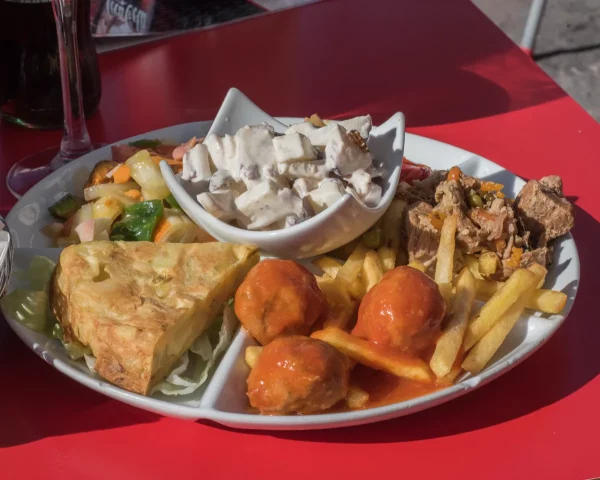The beautiful town of Ronda lies 750 metres above mean sea level and is built on either side of a huge, 100 metre deep gorge carved through the hills by the rio Guadalevín. It is a great place to visit and one of my favourites. The views are superb.


You can drive to Ronda, take a bus, join a guided excursion or there is one train per day from Málaga. With one train in each direction, it is possible to make it a day trip with around 5 hours to look around. Ideally, though, to try and see the majority of sights (and at a more leisurely pace), an overnight stay would be the way to go.

One side of the town dates from Moorish times, the other from the 15th century. Three bridges span this impressive gorge: Puente Romano (Roman Bridge), also known as the Puente San Miguel, Puente Viejo (Old Bridge), also known as the Puente Árabe or Arab Bridge and Puente Nuevo (New Bridge).

Puente Nuevo was apparently started in 1751 and took 42 years to complete, and the huge stone blocks used in the construction had to be raised from the bottom of the gorge, an engineering feat in itself. This was not the first bridge on this site, however Records show that in the early 1730s, one was completed in just eight months by Juan Camacho and José Garcia. Such was the perilous nature of their construction, it collapsed with the loss of some fifty lives.
Beneath the central arch is a chamber which was formerly used as a prison. It is entered via a square building which was once the guard-house. For a fee, visitors can enter the chamber and see an exhibition describing the bridge’s history and construction.

Apart from the views, there is plenty to see and do in Ronda. The town houses the oldest bullfighting ring in Spain, completed in 1784 by the same architect who designed the Puente Nuevo, José Martin de Aldehuela.

A Few More Things To See
La Ciudad (Moorish citadel)
Formerly the main entrance to the city and was once protected by towers.
Entry to the area is through the horseshoe-shaped Moorish Gate, Puerta de Almocábar. On the corner of this gate, the Almohad rulers erected an octagonal tower, subsequently destroyed by the Christians during their successful assault in 1485. This spot is now marked by the Iglesia del Espiritu Santo, a church built by the victorious Christians to celebrate their victory on Whit Sunday, May 20th, 1485.
To the west is the other surviving horseshoe-shaped arch, the Arco de Cristo. There is also an old Moorish minaret, renamed the Minaret of San Sebastián by the Christians.
The old city walls still stand and visitors can walk along them towards the bridge. Below, in a walled garden, is the Moorish bath house, the Hammam. It is open to the public, free of charge.
Casa del Rey Moro
The Casa del Rey Moro was built in the 18th Century and has gardens designed by the French landscape gardener Forestier in 1912. It houses the so-called Water Mine. In the 14th Century, Ronda was frequently besieged and the Moorish king, Abomelik, ordered the cutting of steps into the stone walls of the gorge to enable the bringing of water from the Río Guadelevin below. The crumbling staircase was restored in 1911.
Palacio de Mondragón
Museum devoted to the history of the area.
The Alameda
Tree-lined avenue opened to the public in 1806.
The Carmelite Convent
Up the hill from the bullring is a flight of stone steps leading to the wooden doors of the Merced Carmelite Convent. The first Carmelites were male hermits, former pilgrims and crusaders who gathered together in 1155 AD at Mount Carmel in Palestine and dedicated themselves to a life of austerity, poverty and prayer. There were also women who wanted a similar life and in 1452 John Soreth, Prior General of the Carmelites, officially affiliated the first nuns. It is a cloistered order devoted to prayer, penance and perpetual abstinence. Visitors are always welcome but the nuns’ privacy must be respected at all times.


Ronda has no shortage of eateries all over the town and there are tapas platters aplenty to keep the energy levels up.

